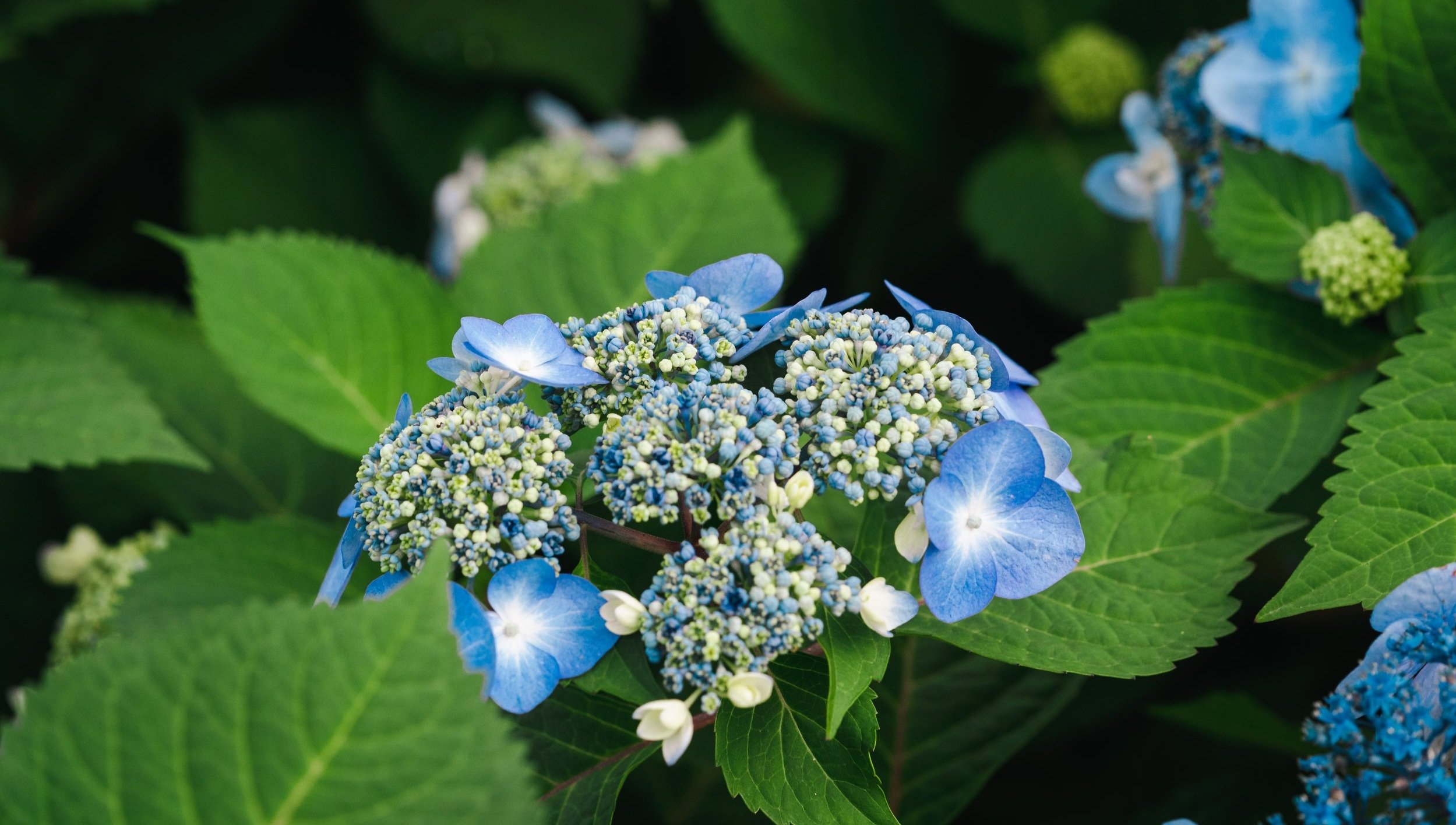plant 101: hydrangeas
Hydrangea spp.
hydrangeas are a beloved genus of flowering plants known for their lush, vibrant blooms and ease of care. gardeners cherish these plants for their spectacular flowers that can transform any garden into a colorful oasis. with numerous species to choose from, hydrangeas offer versatility in landscaping and can thrive with proper care.
Hydrangea arborescens ‘Incrediball Blush’
climbing hydrangea (Hydrangea anomala subsp. Petiolaris)
climbing hydrangeas are celebrated for their ability to cling to structures, creating a stunning vertical display. their dark green leaves provide a beautiful backdrop for the fragrant white flowers that bloom in late spring and summer. these hydrangeas are adaptable to both sun and shade and can thrive in various soil types.
smooth hydrangea (Hydrangea arborescens)
smooth hydrangeas, native to the wild, transform dramatically when cultivated in gardens - provided they have plenty of shade. in their natural habitat, they are loose and open, but in garden settings, they form dense, impressive mounds. their creamy white flowers bloom in june and can continue into the late summer if pruned. ‘Annabelle’ is a perennial favorite with large, rounded, showy white inflorescences.
Hydrangea macrophylla ‘PIIHM-II’ Endless Summer Bloomstruck (bigleaf mophead)
bigleaf hydrangea (Hydrangea macrophylla)
bigleaf hydrangeas are perhaps the most iconic, known for their large, showy blooms that can ranges from shades of pink or blue depending on soil pH. these hydrangeas have a rounded habit with thick, waxy stems. both types — more natural “lacecap” and the much showier “mophead” — require deep, well drained soils and plenty of moisture. the popular Endless Summer series produces flowers on new growth when pruned, fertilized, and given plenty of water.
panicle hydrangea (Hydrangea paniculata)
panicle hydrangeas are very popular in the landscape for good reason. their conical flowers open white and transition to pink and bronzing as they age. panicle hydrangeas are incredibly adaptable, tolerating more sun than other hydrangeas, but still preferring partial shade. flowers open white in june and may hold their color through the early fall. ‘Limelight’ is one of the most popular cultivars with ‘Pinky Winky’ and ‘Quickfire’ providing additional red in the bloom.
Hydrangea paniculata ‘Limelight’
oakleaf hydrangea (Hydrangea quercifolia)
oakleaf hydrangeas are noted for their striking foliage, which turns rich red to burgundy in the fall. their white flowers, which appear in june, develop a purplish pink hue with age. an oakleaf requires plenty of shade and water. ‘Snow Queen’ may be the most poplar with large pure-white blooms while ‘Ruby Slippers’ is showy with deep red.
Hydrangea quercifolia ‘Snow Queen’
mountain hydrangea (Hydrangea serrata)
native to the mountains in Japan, these hydrangeas a similar to bigleaf hydrangeas, but with smaller leaves and, typically, a more compact growth habit. just like their native habitat, mountain hydrangeas require well drained soils, lots of water, and more shade than sun. use Tuff-Stuff Ah-Ha in mass plantings for a colorful show.
Hydrangea serrata ‘SMNHSDD’ Tuff Stuff Ah-Ha (mountain lace-cap)
planting hydrangeas
when planting hydrangeas, selecting the right location is crucial. most species thrive in partial shade, though panicles may tolerate more sun if provided with sufficient moisture. amending the soil with organic matter such as Barky Beaver Pine Soil Conditioner and planting with mycorrhizae fertilizer tablets can improve moisture retention and fertility.
for bigleaf hydrangeas, soil pH adjustment is essential to achieve the desired flower color. use Espoma Soil Acidifier to create an acidic soils (pH below 6) to produce blue flowers. Espoma Garden Lime can help you achieve an alkaline soil (pH above 6) resulting in pink blooms.
Hydrangea macrophylla ‘BAILMACSEVEN’ Eclipse Hydrangea (dark bigleaf mophead)
care and maintenance
watering: hydrangeas require consistent moisture, especially during dry periods. deep watering encourages deep root growth and promotes the bold blooms hydrangeas are known for. water early in the day, always at the base of the plant, to minimize evaporation and reduce the risk of disease.
pruning: pruning needs vary among species. for bigleaf, oakleaf, and mountian hydrangeas, prune after flowering. panicle and smooth hydrangeas can be pruned in late winter or early spring since they bloom on new wood. removing spent blooms can encourage a second flush of flowers in some species, like smooth hydrangeas.
fertilizing: a balanced, slow-release fertilizer applied in spring can promote healthy growth and abundant blooms. consider an organic approach such as Espoma Holly Tone which features has additional iron to preserve a deep green look to the foliage or Milorganite, to provide a needed boost of nitrogen.
pest and disease control: hydrangeas are generally hardy against most pests, but may benefit from regular inspection and treatment with insecticidal soap or horticultural oil. common diseases like powdery mildew and leaf spot can be mitigated by ensuring good air circulation and avoiding overhead watering, focusing at the base of the plant.
Hydrangea macrophylla ‘Pop Star’ (bigleaf lacecap)
hydrangeas are a versatile and stunning addition to any garden. with proper planting, care, and maintenance, these beautiful plants will reward you with their spectacular blooms year after year. whether you choose the climbing, smooth, bigleaf, panicle, or oakleaf varieties, hydrangeas are sure to enhance your landscape with their unique charm and vibrant colors.
call today to see what species and cultivars we have in stock.







